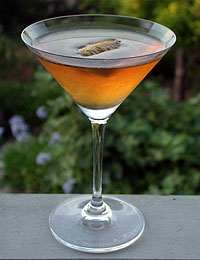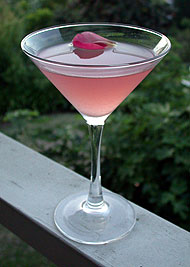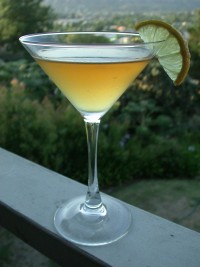Cocktail of the Day: Delmonico
Yesterday was Wes’ turn, and once again he came up with a classic that neither of us had ever gotten around to trying. This is a wonderful old chestnut, and back in the day it even called for its own glass, the Delmonico glass. They’re rare as dodo’s teeth nowadays, but a whiskey sour glass is pretty much the same thing. We didn’t have either, actually … a cocktail glass had to suffice.
The combination of the two main base spirits might sound unlikely at first, but it was really delightful. Make sure you get a nice lemon twist with lots of oil in the skin, and express that oil onto the surface of the drink when you twist — that flavor component is important.
1 ounce gin.
1/2 ounce brandy.
1/2 ounce dry vermouth.
1/2 ounce sweet vermouth.
1 dash orange bitters.Combine with cracked ice in a shaker or mixing glass. Stir for no less than 30 seconds, then strain into a cocktail glass.
Express the oil from a lemon twist onto the surface of the drink and garnish with the twist.









